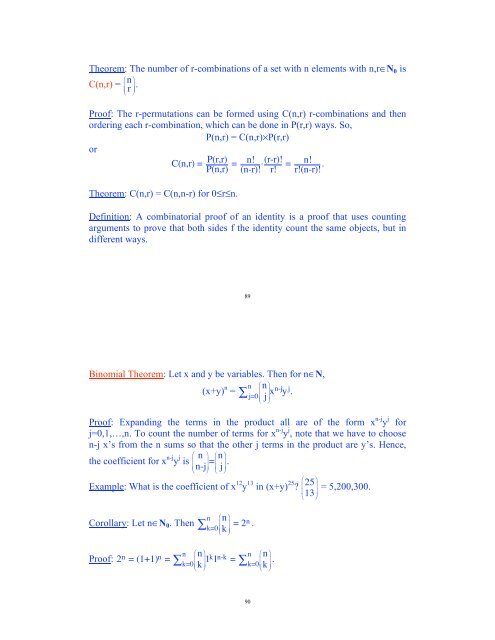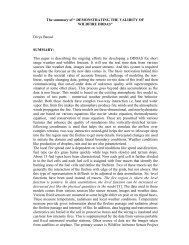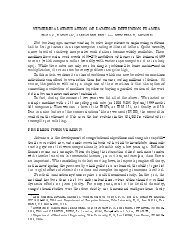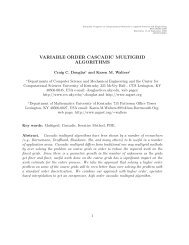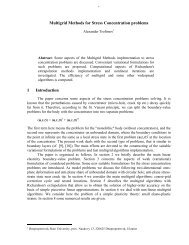Discrete Mathematics University of Kentucky CS 275 Spring ... - MGNet
Discrete Mathematics University of Kentucky CS 275 Spring ... - MGNet
Discrete Mathematics University of Kentucky CS 275 Spring ... - MGNet
Create successful ePaper yourself
Turn your PDF publications into a flip-book with our unique Google optimized e-Paper software.
Theorem: The number <strong>of</strong> r-combinations <strong>of</strong> a set with n elements with n,r,N 0 is<br />
C(n,r) = n # r<br />
!<br />
"<br />
$<br />
.<br />
%<br />
&<br />
Pro<strong>of</strong>: The r-permutations can be formed using C(n,r) r-combinations and then<br />
ordering each r-combination, which can be done in P(r,r) ways. So,<br />
P(n,r) = C(n,r)$P(r,r)<br />
or<br />
C(n,r) = P(r,r)<br />
P(n,r) = n!<br />
(n-r)! !(r-r)! = n!<br />
r! r!(n-r)! .<br />
Theorem: C(n,r) = C(n,n-r) for 0;r;n.<br />
Definition: A combinatorial pro<strong>of</strong> <strong>of</strong> an identity is a pro<strong>of</strong> that uses counting<br />
arguments to prove that both sides f the identity count the same objects, but in<br />
different ways.<br />
89<br />
Binomial Theorem: Let x and y be variables. Then for n,N,<br />
(x+y) n n ! n$<br />
= # &<br />
' x<br />
j=0#<br />
j<br />
n-j y j .<br />
&<br />
Pro<strong>of</strong>: Expanding the terms in the product all are <strong>of</strong> the form x n-j y j for<br />
j=0,1,…,n. To count the number <strong>of</strong> terms for x n-j y j , note that we have to choose<br />
n-j x’s from the n sums so that the other j terms in the product are y’s. Hence,<br />
the coefficient for x n-j y j ! n $<br />
is # &<br />
# n-j<br />
= ! n $<br />
# &<br />
& # j<br />
.<br />
&<br />
"<br />
%<br />
"<br />
%<br />
Example: What is the coefficient <strong>of</strong> x 12 y 13 in (x+y) 25 !<br />
? 25 $<br />
# &<br />
#<br />
13<br />
= 5,200,300.<br />
&<br />
n ! n$<br />
Corollary: Let n,N 0 . Then # &<br />
' k=0#<br />
k<br />
= 2n .<br />
&<br />
Pro<strong>of</strong>: 2 n = (1+1) n n ! n$<br />
= # &<br />
# k<br />
1k 1 n-k n ! n$<br />
= # &<br />
'<br />
&<br />
' .<br />
k=0<br />
k=0#<br />
k&<br />
"<br />
%<br />
"<br />
%<br />
"<br />
"<br />
%<br />
%<br />
"<br />
%<br />
90


